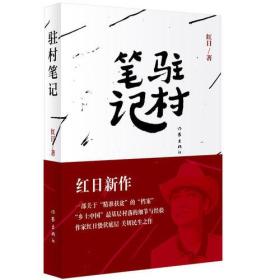
正版现货新书 非线太赫兹光谱的概念与应用(英文版)/国外物理著作原版系列 9787560394718 (德)托马斯·艾尔塞瑟//克劳斯·瑞曼尼//迈克尔·沃纳
全新正版现货,以书名为准,放心购买,购书咨询18931383650朱老师
¥ 47.94 7.1折 ¥ 68 全新
库存2件
作者(德)托马斯·艾尔塞瑟//克劳斯·瑞曼尼//迈克尔·沃纳
出版社哈尔滨工业大学出版社
ISBN9787560394718
出版时间2021-07
装帧平装
开本16开
定价68元
货号31270090
上书时间2024-11-30
- 在售商品 暂无
- 平均发货时间 9小时
- 好评率 暂无
- 最新上架
商品详情
- 品相描述:全新
- 商品描述
-
目录
Author biographies
Symbols
1 Introduction
1.1 Linear optical response
1.2 Low-energy excitations in condensed matter
1.2.1 Electronic excitations
1.2.2 Vibrational excitations
1.3 Charge transport in solids
References
2 Terahertz technology
2.1 Generation of coherent terahertz radiation
2.1.1 Terahertz lasers
2.1.2 THz generation by optical frequency conversion
2.1.3 Photoconductive switches
2.2 Phase-resolved detection of terahertz transients
2.2.1 Photoconductive antennas
2.2.2 Electro-optic sampling
2.3 Linear terahertz spectroscopy and imaging
References
3 Nonlinear light-matter interactions
3.1 Nonlinear optical response in the THz range
3,1.1 Theoretical framework
3.1.2 Approximations
3.2 Nonlinean currents in,condensed matter
3.2.1 Shift currents in systems lacking inversion symmetry
3.2.2 Nonlinear currents of electrons in a periodic potential
3.2.3 Nonlinear currents without real-space transfer of carrie:
3.3 Quantum coherences in coupled multi-level systems
3.4 Nonperturbative regime of light-matter interaction
Referencees
4 Methods of nonlinear terahertz spectroscopy
4.1 Concepts and experimental implementation
4.1.1 Optical geometries for nonlinear THz experiments
4.1.2 Interaction schemes and pulse sequences
4.2 Two-dimensional spectroscopy
4.2.1 Experimental methods of two-dimensional THz spectroscopy
4.2.2 Data representation and analysis
References
5 Nonlinear terahertz spectroscopy of condensed matter
5.1 Dynamics and couplings of low-energy excitations in liquids and solids
5.1.1 Condensed-phase molecular systems
5.1.2 Solids and nanostructures
5.2 Field-driven nonlinear response and charge transport in solids
5.2.1 Nonlinear THz response of softmodes in a molecular crystal
5.2.2 Polaron transport
5.2.3 Coherent high-field transport in GaAs on femtosecond time scales
5.2.4 THz-induced interband tunneling of carriers
5.2.5 Shift current in LiNbO3
5.2.6 Nonlinear transport in graphene
5.3 Conclusions and outlook
References
内容摘要
本书主要介绍了非线性兆赫光谱学的相关内容,共五章内容。书中通过线性光学响应、凝聚物质中的低能量激发和固体电荷输运引入太赫兹技术,并介绍了如何产生相干太赫兹辐射、太赫兹瞬态的相位分辨检测和线性太赫兹光谱和成像等问题,又叙述了非线性光—物质相互作用。
相关推荐
-

正版现货新书 非线编辑 9787516532416 刘瑞
全新北京
¥ 45.44
-

正版现货新书 影视非线编辑 9787504341143 张歌东
全新北京
¥ 10.99
-

正版现货新书 纣王 9787559660930 康赫
全新北京
¥ 23.46
-

正版现货新书 非线数据挖掘 9787118128611 张小乾
全新北京
¥ 63.26
-

正版现货新书 非线编辑 9787303209613 李娜 王建国 孙茜芸
全新北京
¥ 34.47
-

正版现货新书 非线振动 9787040615807 刘延柱,陈立群
全新北京
¥ 53.83
-

正版现货新书 影视非线编辑简明教程 9787512312067 朱花 主编
全新北京
¥ 30.60
-

正版现货新书 非线编辑 9787560995274 陈婷婷,李慧文 主编
全新北京
¥ 37.80
-

正版现货新书 非线波动方程 9787547837153 李大潜;周忆
全新北京
¥ 131.98
-

正版现货新书 非线分歧:理论和计算 9787030178206 杨忠华
全新北京
¥ 64.18
— 没有更多了 —












以下为对购买帮助不大的评价